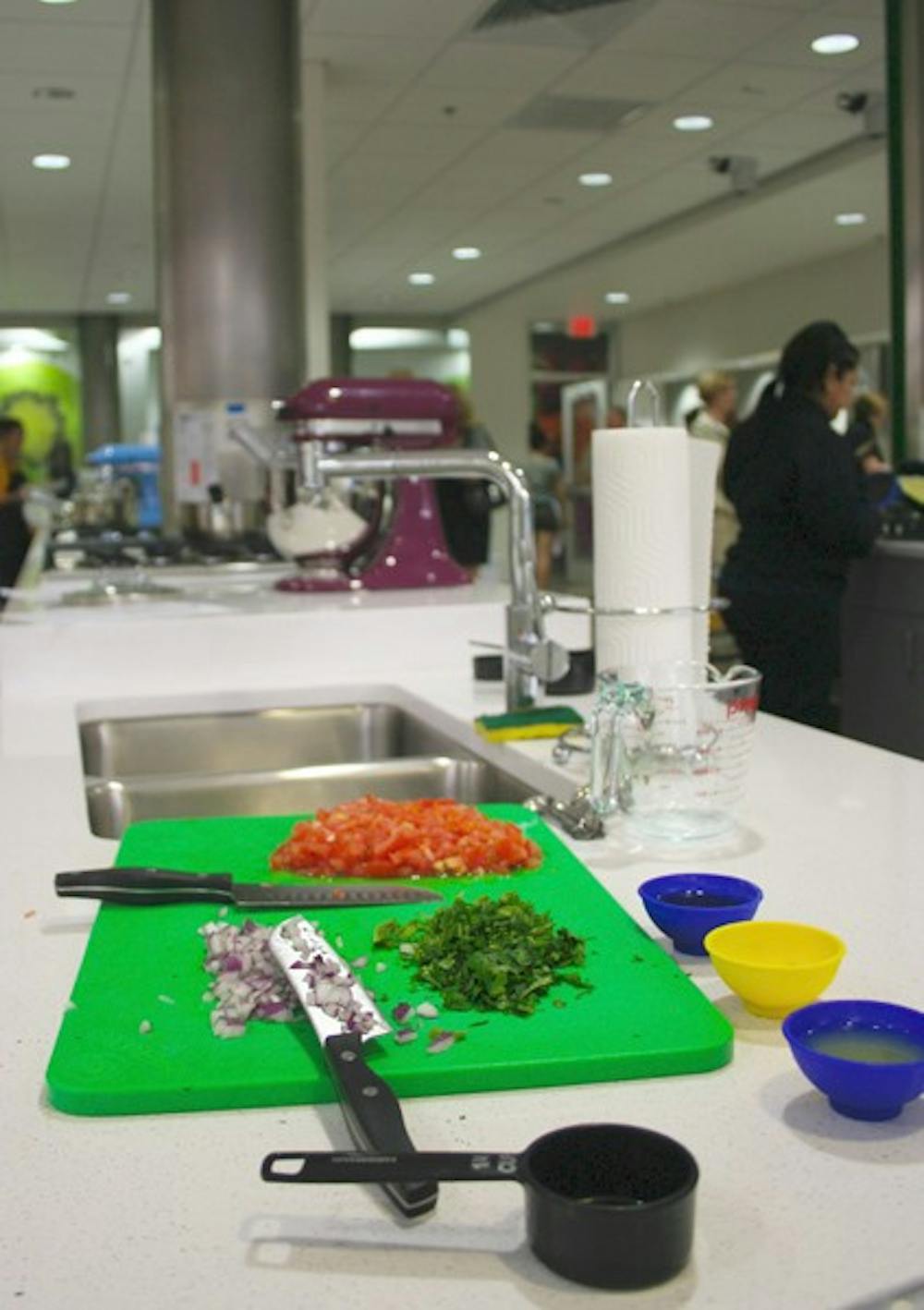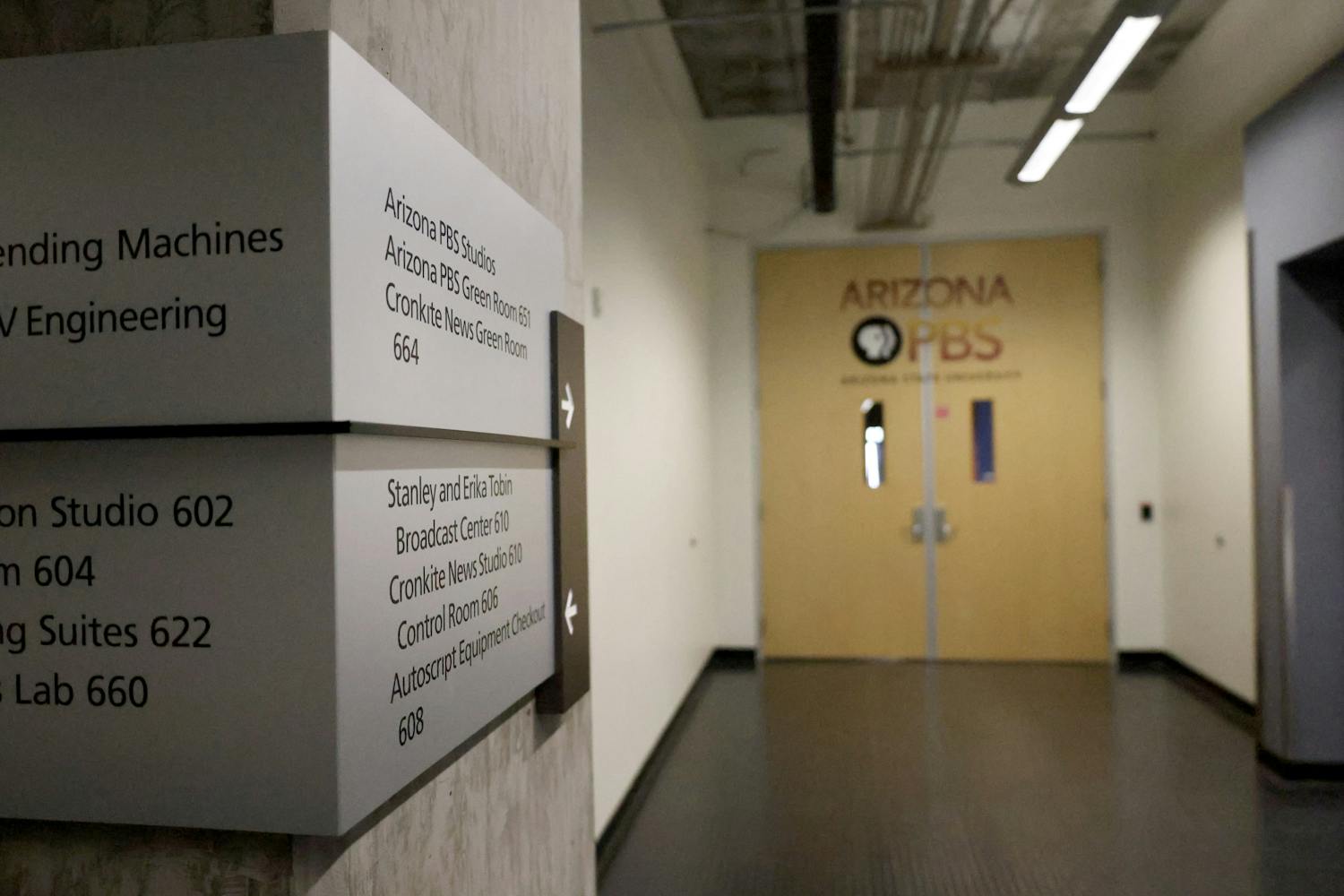With more than 5,130 square feet of cooking space, state of the art equipment and natural lighting, the new instructional kitchens on the Downtown campus are an assault on the senses.
Designed and constructed in only five months so they could open at the start of the spring semester, the kitchens are used by students in the College of Nursing and Health Innovation Nutrition Program.
ASU’s Nutrition Program was first located in Tempe, said Carol Johnston, director of the Nutrition Program.
In 2000, the program was relocated to the Polytechnic campus, where students have complained about outdated resources and travel time.
Dietetics junior Candace Davis said she and other students are limited at the Polytechnic campus because they don’t have access to some equipment, such as dishwashers. She said they have to wash everything by hand, which is difficult because of the low water pressure.
In a push to integrate with other health-related majors, the Nutrition Program was incorporated into the College of Nursing and Health Innovation in 2009. With the new instructional kitchens, the program is in the process of moving to the Downtown campus.
Davis had a chance to cook in the new Downtown kitchens at the public opening April 6 and said she was impressed by the new equipment.
“It’s more spaced out, but at the same time I can see what everyone else is cooking, which is really fun,” she said.
The ASU Nutrition Program is the second largest in the nation, said Terry Olbrysh, director of marketing and communications for the college.
The Nutrition Program offers four degrees: human nutrition, dietetics, food and nutrition management and nutrition communication. Around 80 to 85 percent of ASU’s Nutrition students major in human nutrition and dietetics.
The hope for the new instructional kitchens is that they will enrich students’ learning experience.
“Our program is highly rated and enrollment continues to increase as the program and degree offerings have been expanded and enhanced,” he said.
Johnston hopes the new facility will increase enrollment in food management.
The Downtown campus is next to various organizations that require food service, and students can be placed in internships right next to the new facility, Johnston said.
“The hustle and bustle of being downtown is very exciting. I think the move will be wonderful,” Johnston said.
Food and nutrition management sophomore Lindsey Ingalls said the new Downtown kitchen is much better than the Polytechnic kitchen.
“The [kitchen at the] Polytechnic campus looks like it’s out of the ’50s,” Ingalls said. “We actually have state of the art equipment [downtown] that you’d see in a real professional kitchen. This makes the learning experience a lot better for us.”
Linda Vaughan, associate dean of the Health Promotion Programs in the College of Nursing and Health Innovation, said the new location will help students communicate with other professionals before they graduate. She believes the move will make each discipline appreciate the skills and knowledge that everyone has to bring to the table.
“Historically there might have been a little tension between dieticians and nurses and by having some classes together at the undergraduate and graduate level they will come to appreciate what each one brings into the health care environment,” said Vaughan.
Vaughan said the new location is more accessible for students and hopes for an increase in enrollment.
Vaughan also said she sees a continuation in the excellent faculty and competiveness for their students.
Despite the tight five-month time frame, the space was built with sustainable strategies in mind.
ASU alumnus Larry Enyart and his son Lance, both architects at LEA-Architects, LLC, used sustainable methods when designing the kitchens, including using recycled blue jeans for sound insulation in the walls, motion sensors that automatically turn off lights and repurposed carpet.
Enyart, who has been in business 36 years and graduated from ASU with a bachelor’s degree in 1972 and a master’s degree in 1977, said working on the project was a great opportunity to support the institution where he spent many years.
The Enyarts said the biggest struggle to create the kitchens was the strict time limit.
“I was going to say it was impossible, but we actually did it,” Larry Enyart said.
Dean Chiarelli, a lecturer in the Program of Nutrition, said he was very happy with the new kitchens.
“We have equipment here that is amazing,” Chiarelli said. “I believe that because of the greatness of the equipment paired with good instruction and motivation from the students, they will get a stellar academic experience.”
Chiarelli commented on the individualized audio/visual equipment that enables students to see the instructor demonstrations and the bright, vibrant prints decorating the walls.
“My perception as an instructor is that people don’t want to leave here. My own personal experience is this is where I’d want to be even if I wasn’t working and what a great job is that?” Chiarelli said.
Reach the reporter at tchavez3@asu.edu





